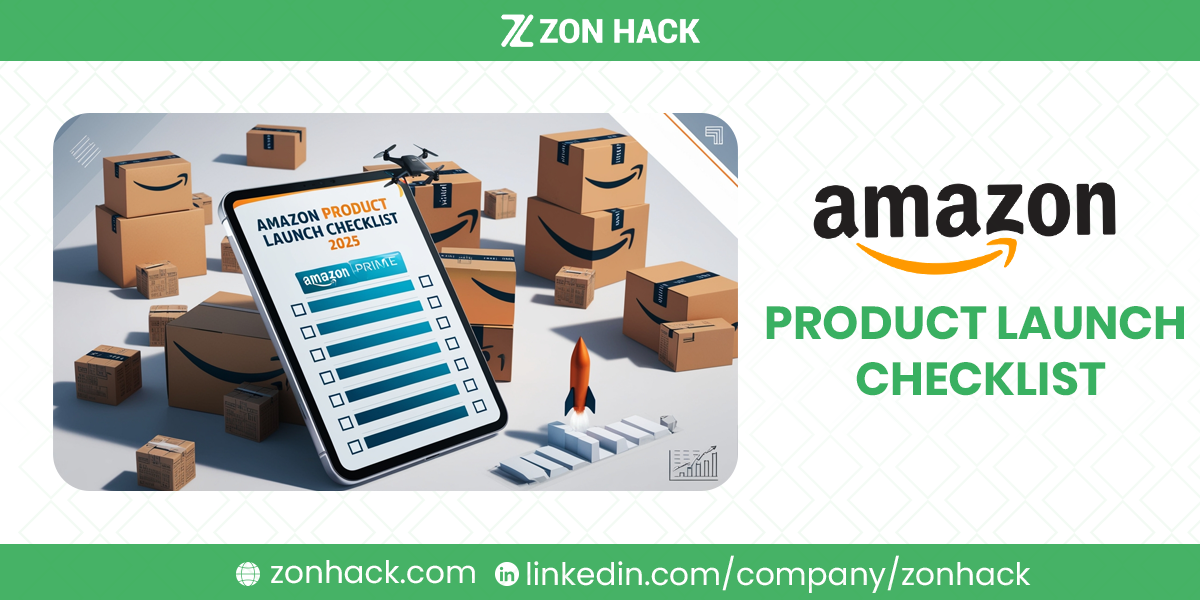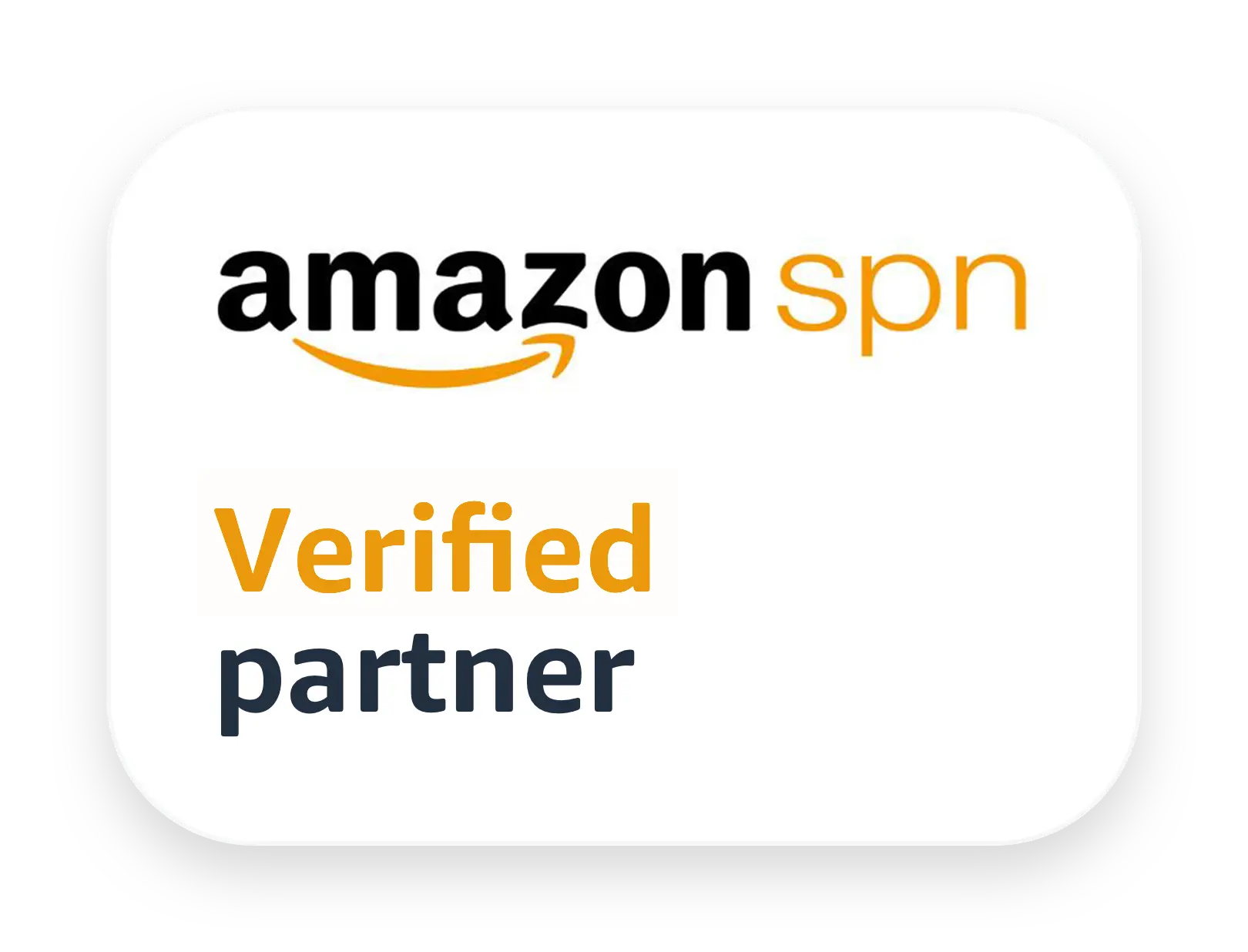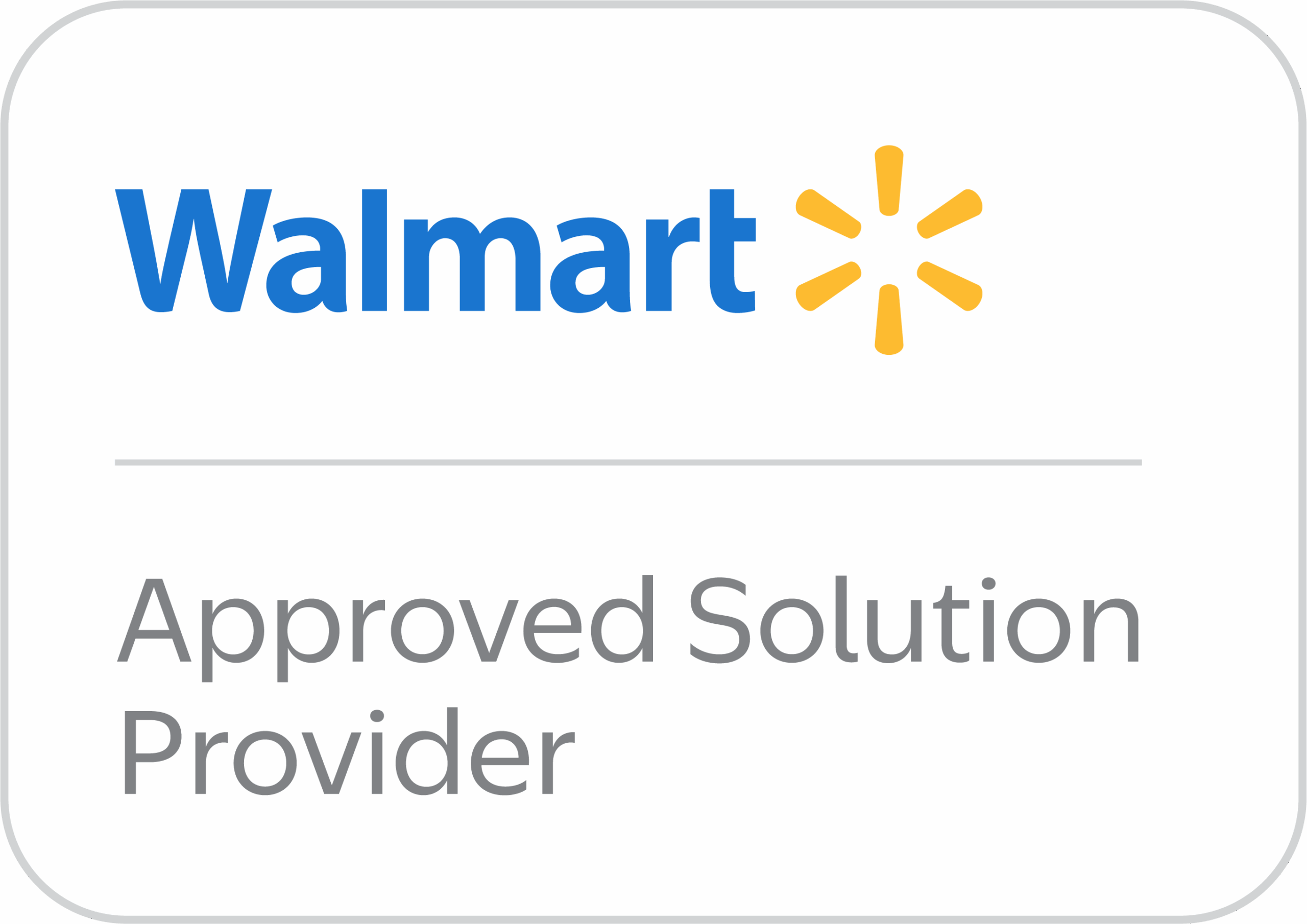Launching a product on Amazon in 2025 requires more than just uploading a listing and hoping for sales. The Amazon marketplace has become increasingly competitive, with over 9.5 million sellers globally and thousands of products added daily. To succeed, sellers must carefully plan and execute a strategic product launch that caters to Amazon’s algorithms, customer preferences, and market trends. This comprehensive guide provides a step-by-step checklist to ensure your product launch is as successful as possible.
Checklist #1: Pre-Launch Preparation
Market Research
Step 1: Identify Market Demand
Before investing time and resources, it’s crucial to validate your product idea. Tools like Amazon’s Best Sellers list can reveal trending products, while platforms like Product Opportunity Explorer offer data-driven insights into unmet consumer needs. For instance, in 2024, niche items such as eco-friendly kitchenware saw a 35% surge in demand. By analyzing trends and identifying underserved markets, you can ensure that your product fills a gap rather than competing in an oversaturated space.
Step 2: Analyze Competitors
Understanding your competitors is equally important. Review their listings, customer reviews, and pricing strategies. For example, if your main competitor’s reviews frequently mention durability issues, you can make that a key selling point for your product. Tools like Helium 10 or Jungle Scout can help you gather competitive insights, giving you a clear edge.
Step 3: Understand Customer Needs
Listening to your potential customers is non-negotiable. Conduct surveys, analyze FAQs, and read reviews to uncover pain points. Suppose a product has repeated complaints about complicated assembly—your unique selling proposition (USP) could emphasize ease of use.
Step 4: Craft a Unique Selling Proposition (USP)
A strong USP sets your product apart. Consider this example: a collapsible water bottle became a bestseller after marketing its eco-friendliness and portability for travelers. Highlight how your product not only solves a problem but does so better than the competition.
Product Sourcing and Development
Step 5: Source Quality Products
Collaborating with reliable suppliers is the cornerstone of product success. In 2025, buyers value transparency and consistency more than ever. Vet suppliers rigorously, examining production capacity and lead times. A single delay can derail your launch timeline.
Step 6: Product Testing and Quality Control
Rigorous testing is essential to avoid costly returns and bad reviews. For example, an outdoor camping lantern that was rigorously tested for water resistance gained a 4.9-star rating post-launch due to customer trust in its durability.
Create a Launch Plan
Step 7: Set Clear Objectives and Goals
Define SMART goals (Specific, Measurable, Achievable, Relevant, Time-bound) for your launch. For instance, aim to sell 500 units within the first month or achieve a 10% conversion rate. Track progress using tools like Amazon Seller Central dashboards.
Step 8: Define Your Target Audience
Building detailed buyer personas helps in crafting targeted marketing campaigns. If your product is a high-end yoga mat, your audience might include fitness enthusiasts aged 25–45 with a focus on premium quality and eco-consciousness.
Step 9: Budget for Your Launch
Financial planning is critical. Allocate funds for product development, marketing campaigns, inventory, and unexpected contingencies. For example, plan to spend 30–40% of your total budget on advertising in the initial stages to gain traction.
Checklist #2: Setting Up Your Amazon Seller Account
Choose the Right Seller Plan
Amazon offers two plans: the Individual Plan is ideal for those selling fewer than 40 items per month, while the Professional Plan is best for higher volumes and includes access to advanced tools. For serious sellers, the Professional Plan at $39.99/month offers excellent value.
Register Your Account
During registration, ensure your business details, tax information, and bank account are ready. The verification process can take several days, so it’s best to get started early. A verified account unlocks access to Amazon’s ecosystem and ensures a smooth launch process.
Consider Brand Registry
The Amazon Brand Registry is a game-changer for brand owners. It offers features like A+ Content, which enhances your listings with high-quality visuals and storytelling. Additionally, it provides protection against counterfeit products, ensuring your brand integrity.
Decide on a Fulfillment Method
Amazon offers two main fulfillment options:
- Fulfillment by Amazon (FBA): Ideal for those who want Amazon to handle shipping, returns, and customer service.
- Fulfillment by Merchant (FBM): Suitable for sellers who prefer to manage their fulfillment operations.
In 2024, over 66% of Amazon sellers used FBA, citing its convenience and Prime eligibility as key benefits.
Checklist #3: Product Listing Creation and Optimization
Create an Effective Product Listing
A compelling product listing can make or break your launch. For example, listings with professional images and optimized titles often see a conversion rate 40% higher than those without.
Step 1: Write Engaging Titles
Your product title should include relevant keywords, such as the brand name, product type, and main features. For instance, “Eco-Friendly Collapsible Water Bottle – BPA-Free, Lightweight for Travel and Hiking.”
Step 2: Detailed Descriptions
Highlight benefits and address customer concerns. Instead of saying, “This bottle is portable,” try “Designed to fit in your pocket, this lightweight water bottle is perfect for travelers.”
Step 3: High-Quality Images
Images should showcase the product in use, its dimensions, and key features. Include at least 7 high-resolution photos to comply with Amazon’s guidelines and improve customer trust.
Keyword Research and SEO
Step 4: Identify Relevant Keywords
Using tools like Helium 10 or AMZScout, identify high-traffic and long-tail keywords. For example, instead of “yoga mat,” target “non-slip eco-friendly yoga mat for hot yoga.”
Step 5: Integrate Keywords Naturally
Ensure your keywords are included in titles, bullet points, and backend search terms. However, avoid keyword stuffing, which can harm your listing’s readability and ranking.
Pricing Strategy
Step 6: Competitive Analysis
Study competitor pricing to set a competitive yet profitable price point.
Step 7: Psychological Pricing
For instance, pricing a product at $19.99 instead of $20 can subconsciously appeal to customers.
Checklist #4: Inventory Management
Effective inventory management ensures you never run out of stock during critical launch periods.
Step 1: Forecast Demand
Estimate initial inventory based on market trends and competitor sales. For instance, if a competitor sells 300 units monthly, you might stock 450 units to accommodate higher launch traffic.
Step 2: Use Inventory Tools
Amazon provides inventory tracking tools that help you manage stock levels, adjust orders, and avoid overstocking.
Checklist #5: Launch Strategies to Gain Traction
Once your pre-launch preparations are complete and your listing is live, the real challenge begins. A strong launch strategy ensures your product gains visibility and momentum from the start, setting the foundation for long-term success.
Step 1: Use Amazon Advertising
Amazon’s advertising platform is one of the most effective tools to boost product visibility during the initial days of your launch. Start with Sponsored Products ads to target high-intent customers actively searching for your product or related keywords. For example, a seller launching a non-slip yoga mat targeted terms like “hot yoga accessories,” leading to a 20% increase in conversion rates within the first week.
Expand to Sponsored Brands and Sponsored Display ads as your sales grow, focusing on brand awareness and retargeting. Allocate a substantial portion of your budget to advertising initially—around 30–40%, as mentioned earlier.
Step 2: Offer Discounts and Coupons
Launching with limited-time discounts, coupons, or promotions is a proven way to attract buyers. For instance, a product listed with a 15% launch discount is more likely to convert curious browsers into paying customers. The green “Save” badge next to your listing grabs attention and improves click-through rates.
Step 3: Leverage Amazon’s Early Reviewer Program
Amazon’s Vine Program and Early Reviewer Program (if applicable) encourage unbiased reviews from trusted sources. These reviews play a critical role in establishing credibility for your product, especially during the first month of your launch.
Step 4: Use Social Media and Influencers
Promote your launch on platforms like Instagram, TikTok, and Facebook to drive external traffic to your Amazon listing. Collaborate with influencers who align with your product’s niche. For example, a seller of eco-friendly kitchenware partnered with sustainability influencers, resulting in a 25% increase in external traffic during the first week.
Step 5: Build an Email Marketing Campaign
If you have an existing customer base, use email marketing to inform them about your product launch. Include exclusive launch offers and clear CTAs linking directly to your Amazon listing.
Checklist #6: Post-Launch Optimization
The first few weeks after the launch are critical for building momentum and maintaining visibility on Amazon.
Step 1: Monitor Sales and Metrics
Track your product’s performance closely using Amazon Seller Central’s analytics tools. Metrics like click-through rate (CTR), conversion rate, and average order value (AOV) help you assess what’s working and identify areas for improvement.
For example, if your CTR is low, consider updating your product images or testing different titles to see if they drive more clicks.
Step 2: Optimize Based on Customer Feedback
Pay close attention to your early reviews and feedback. If customers mention recurring issues, address them immediately. This not only improves your product but also demonstrates to buyers that you value their input.
Step 3: Refine Your Keywords
As data from your advertising campaigns and organic search traffic comes in, identify which keywords perform best. Update your backend search terms and listing to reflect these insights, ensuring you rank higher for relevant searches.
Checklist #7: Leveraging Amazon Tools for Growth
Amazon provides a suite of tools to help sellers optimize their listings, streamline operations, and boost sales.
Step 1: Use A/B Testing with Amazon Experiments
Amazon Experiments allows you to test different versions of your product title, images, and descriptions. For example, a seller who tested two main images—one featuring the product alone and another showing it in use—found that lifestyle images improved CTR by 15%.
Step 2: Enroll in Subscribe & Save
If your product is consumable or regularly needed, offering a Subscribe & Save option can encourage repeat purchases and build customer loyalty. Products with this feature often see an increase in lifetime value (LTV).
Step 3: Participate in Lightning Deals
Lightning Deals appear on Amazon’s Deals page and offer time-sensitive discounts to shoppers. While they require a fee, these promotions can drive significant traffic and sales volume, especially during peak seasons like Prime Day.
Checklist #8: Managing Customer Reviews and Feedback
Customer reviews are the backbone of your product’s reputation on Amazon. Positive reviews boost your listing’s visibility, while negative ones provide opportunities for improvement.
Step 1: Encourage Reviews Ethically
Avoid incentivizing reviews, as this violates Amazon’s guidelines. Instead, use follow-up emails via Amazon’s Request a Review button or automated tools like FeedbackWhiz to politely ask customers to leave feedback.
Step 2: Address Negative Reviews Professionally
Responding to negative reviews demonstrates that you value your customers. For example, if a customer mentions receiving a defective product, apologize and offer a resolution, such as a replacement or refund.
Checklist #9: Scaling Your Business
Once your product has gained traction, focus on strategies to scale your business and sustain growth.
Step 1: Expand Your Product Line
Analyze sales data and customer feedback to identify opportunities for complementary products. For example, if you launched a yoga mat, consider adding yoga blocks or carrying straps to your product line.
Step 2: Expand to Other Marketplaces
Consider expanding to Amazon’s global marketplaces, such as Amazon UK, Germany, or Canada, to reach a wider audience. Each new marketplace comes with its own challenges, but tools like Amazon’s Global Selling Program make the transition smoother.
Step 3: Invest in Brand Building
Focus on building a strong brand presence both on and off Amazon. Create a brand store on Amazon to showcase your products in one place and invest in external channels like social media or your own eCommerce site to diversify revenue streams.
Common Questions About Amazon Product Launches
How much does it cost to launch a product on Amazon?
The cost varies based on factors like product type, marketing budget, and inventory size. On average, expect to spend anywhere from $3,000 to $10,000 for a successful launch, including product sourcing, advertising, and fees.
What is the best time to launch a product?
Launch during high-demand seasons like Q4 for holiday-related items, or align with key shopping events like Prime Day for increased visibility.
How long does it take to see results?
Results can vary, but most sellers start seeing significant sales within the first 30–60 days if their product and launch strategy are strong.
ZonHack: Your Ultimate Amazon Product Launch Solution
Launching a product on Amazon can be overwhelming, but with ZonHack, you’re set for success. Our end-to-end service handles everything from optimized product listings, keyword research, and professional photography to strategic advertising campaigns and post-launch performance tracking.
With a proven framework, we ensure your product ranks higher, drives traffic, and converts shoppers into loyal customers. Our experts use data-driven insights, A/B testing, and competitor analysis to maximize your ROI. Whether it’s pre-launch preparation or scaling post-launch, ZonHack takes the guesswork out of the process, helping you dominate the marketplace while you focus on growing your business.




